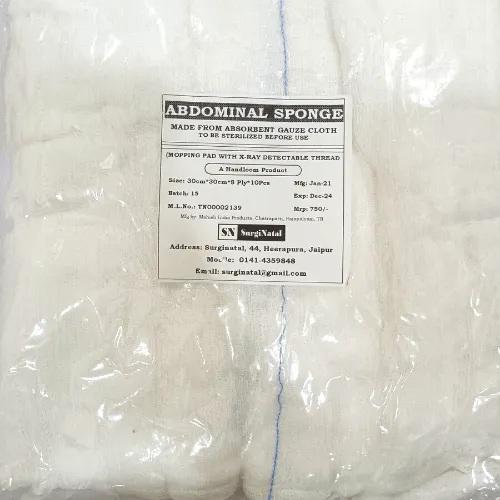Essential Personal Protective Equipment For Workplace
In today's fast-paced world, safety should never take a back seat. Whether on a bustling construction site, working in a laboratory, or tackling home projects, proper personal protective equipment (PPE) is essential. PPE is your first defence against potential hazards that can lead to injuries or health issues. With various options available, understanding what you need and why it matters is crucial for maintaining workplace and personal safety. Let's dive into the must-have types of PPE that will help keep you safe and secure at all times!
Types of PPE for Workplace & Personal Safety
Personal protective-equipment (PPE) ensures workplace and personal safety. It encompasses various gear designed to shield the wearer from potential hazards.
Face masks and respirators are essential for preventing inhalation of harmful particles, especially in healthcare settings or during construction work. They provide a barrier against airborne illnesses and dust.
Gloves come next, offering protection for hands when handling chemicals or sharp objects. The right type can prevent cuts, burns, or infections.
Protective eyewear is vital in environments where flying debris or hazardous liquids exist. Safety goggles can effectively prevent serious eye injuries.
Clothing options include coveralls and high-visibility vests. These not only protect against spills but also enhance visibility on job sites.
Footwear is another crucial element; steel-toed boots safeguard feet from heavy objects while providing a grip on slippery surfaces. Head protection through hard hats completes this essential lineup of PPE.
Face masks and respirators
Face masks and respirators are crucial for protecting individuals from airborne hazards. They are essential for various environments, ensuring workers remain safe while performing their tasks.
Face masks primarily filter out dust and pollen, protecting non-hazardous particles. They’re often used in everyday situations like healthcare settings or routine activities with limited exposure.
Conversely, respirators offer a higher level of filtration. Designed to protect users from harmful substances such as chemicals or infectious agents, they create a secure seal around the face, ensuring that unfiltered air does not enter through gaps.
Choosing between them depends on your specific needs and the risks present in your environment. Understanding these options is vital for maintaining safety standards at all times, whether for general use or specialised work.
Gloves
Gloves are a critical component of personal protective-equipment. They serve as the first line of defence against various hazards in both workplace and everyday situations.
When selecting gloves, it's essential to consider the specific task. Latex gloves offer excellent dexterity for medical applications, while cut-resistant gloves provide protection in manufacturing settings.
Different materials cater to diverse needs. Nitrile gloves resist chemicals and punctures, making them ideal for laboratory work or industrial tasks. Leather gloves can withstand heat and abrasions, perfect for welding or heavy lifting.
Donning the right pair ensures safety without compromising comfort. Well-fitted gloves enhance grip and control, reducing fatigue during extended use.
Regular inspection is vital, too. Look out for signs of wear and tear that could compromise safety standards before they become a risk on the job or at home. Proper storage also significantly extends their lifespan.
Protective eyewear
Protective eyewear plays a critical role in personal safety, especially in environments where hazards are prevalent. Quality lenses can shield your eyes from potential injuries when working with chemicals, machinery, or flying debris.
These specialized glasses come in various styles and materials to suit different needs. Some feature impact-resistant polycarbonate lenses that can withstand high-velocity impacts. Others incorporate anti-fog coatings for clear vision during intense tasks.
It's essential to select eyewear that fits well and offers adequate coverage. A snug fit prevents dust and particles from entering around the edges while providing maximum protection.
Additionally, consider options with UV protection if you'll be exposed to sunlight for extended periods. This adds another layer of defence against harmful rays, making protective eyewear vital for indoor and outdoor workspaces. Investing in reliable eye protection ensures you keep your vision safe while performing tasks effectively.
Protective clothing
Protective clothing is crucial for safeguarding against workplace hazards. This category includes coveralls, lab coats, and specialized gear to shield workers from chemical spills, heat, or biological threats.
The fabric used in protective clothing often boasts features like flame resistance or waterproofing. These qualities ensure employees remain safe while performing their tasks under demanding conditions.
In industries such as construction and manufacturing, durable outerwear protects against cuts and abrasions. This type of apparel not only enhances safety but also boosts confidence among workers.
Choosing the proper protective clothing involves understanding specific risks associated with a job. Each environment may require different materials or designs to provide adequate protection.
Investing in high-quality options ensures longevity and effectiveness, ultimately contributing to overall personal safety on the job site.
Footwear and head protection
Footwear and head protection are crucial components of personal protective-equipment. Proper footwear safeguards against slips, falls, and heavy object impacts. Steel-toed boots offer excellent protection in construction environments, while slip-resistant soles enhance safety on slick surfaces. Head protection is equally important. Hard hats shield workers from falling debris and electrical hazards. They come in various styles to suit different job requirements.
When choosing footwear, ensure a comfortable fit for mobility during extended hours. Look for adjustable options for hard hats that provide a secure fit without compromising comfort. Investing in quality footwear and headgear protects you and enhances your productivity by reducing the risk of injuries on the job site. Prioritize this essential PPE to create a safer work environment every day.
Importance of using proper PPE
Proper personal protective-equipment (PPE) is essential in maintaining safety in any workplace. It acts as the first line of defence against various hazards. Wearing suitable PPE minimizes the risk of injuries and illnesses. Whether it’s exposure to chemicals, falling objects, or infectious agents, having the right gear can make all the difference.
Moreover, proper use of PPE fosters a culture of safety among employees. When everyone prioritizes their protection, it encourages teamwork and accountability. Investing in quality PPE shows a commitment to employee well-being. Reducing downtime due to accidents or health issues boosts morale and enhances productivity. Remember that using improper or inadequate PPE can lead to severe consequences. Therefore, understanding its importance is crucial for your overall safety strategy.
How to Choose the Right Healthcare PPE suppliers?
Proper Healthcare PPE suppliers starts with understanding your needs. Consider the hazards present in your work environment. Are you dealing with chemicals, noise, or physical risks? Identifying these factors is crucial. Next, assess how frequently you'll be using each type of PPE. Daily tasks may require more robust options than occasional-use items. Consider comfort, too; if the gear isn’t comfortable, you're less likely to wear it properly.
Don’t overlook fit and sizing, either. Ill-fitting PPE can compromise safety and effectiveness. Always refer to manufacturer guidelines for proper measurements. Check for compliance with industry standards and regulations. Look for certifications that ensure quality and reliability in protection against identified hazards. Doing thorough research will help you make informed decisions tailored to your unique situation.
Where to Shop for High-Quality PPE?
When shopping for high-quality personal protective-equipment, your first stop should be specialized online retailers. They often offer a wide range of options catering to various industries.
Local safety supply stores can also be invaluable. Here, you can physically inspect products and seek advice from knowledgeable staff who understand the nuances of different PPE types.
Consider checking out trusted wholesale suppliers, too. Buying in bulk may reduce costs while ensuring your team is well-equipped with essential gear.
Don’t overlook reputable brand websites; they frequently offer exclusive deals directly from the source on premium items.
Read reviews and compare ratings across platforms before making a purchase. This ensures you're investing in reliable protection tailored to your needs.
Tips for Proper Use and Maintenance of PPE
Proper use of personal protective-equipment (PPE) ensures safety in various environments. Before putting on your gear, scrutinize it. Look for any signs of wear or damage that could compromise protection.
When wearing face masks and respirators, ensure a snug fit around the nose and mouth to prevent contaminants from entering. Adjust straps as necessary for comfort without sacrificing security.
Regular cleaning is essential for reusable PPE items like gloves and eyewear. Follow manufacturer guidelines to maintain their integrity and effectiveness. Store them in a clean, dry place away from direct sunlight.
Don’t forget about training! Familiarizing yourself with proper don, doff, and disposal of PPE will significantly enhance your safety protocols.
Always replace any damaged or expired equipment immediately to ensure maximum protection.
Investing in Your Safety with Quality PPE
Investing in quality personal protective-equipment is not just a choice; it's a commitment to your safety and well-being. When you prioritize high-grade PPE, you're taking proactive steps to minimize risks in the workplace. Quality materials offer durability that outlasts cheaper alternatives. This means fewer replacements and better long-term protection against hazards, whether gloves or respiratory masks; reliable gear can make all the difference.
Consider comfort as part of your investment. Well-fitting equipment enhances mobility and reduces fatigue, allowing you to perform tasks more effectively without compromising safety. Choosing top-notch PPE reflects a culture of care within any organization. It shows employees that their health matters and fosters a secure environment. Embracing this approach elevates overall productivity, too—when people feel safe, they work better!
Conclusion
Choosing the proper personal protective equipment is vital for ensuring safety in both workplace and daily activities. With the variety of options available, assessing your specific needs is essential. Using proper personal protective-equipment reflects a commitment to health and safety standards. This investment pays off by reducing accidents and injuries. Stay informed about the latest advancements in PPE technology. Regularly updating your gear ensures you’re always prepared for any risks associated with your work or lifestyle. Your well-being should never be compromised. Make educated decisions about selecting the best personal protective-equipment for you.
FAQs
What is personal protective equipment?
Personal protective-equipment, or PPE, refers to gear designed to protect the user from injury or illness in the workplace. This can include anything from gloves and masks to helmets and specialized clothing.
Why is proper PPE necessary?
Proper PPE plays a crucial role in safeguarding against workplace hazards. It helps prevent injuries related to chemical exposure, falls, cuts, and other potential dangers. In many cases, using appropriate PPE is not just advisable; it’s required by law.
How do I know which type of PPE I need?
Choosing the correct type of personal protective-equipment depends on your specific work environment and tasks. Assessing the risks associated with your job will guide you in selecting suitable items. Consult with safety professionals if you are unsure about what best fits your needs. Investing time into understanding these aspects of personal protective-equipment will significantly enhance workplace safety practices and beyond.
|
Related Business Listings |






